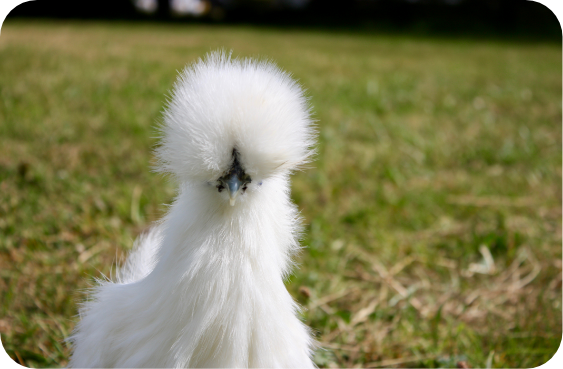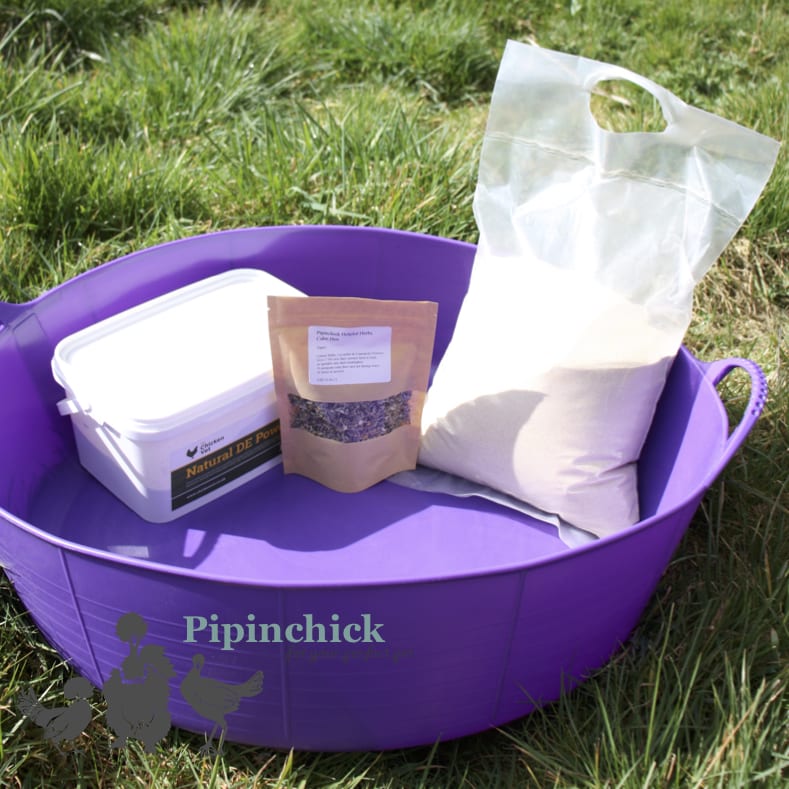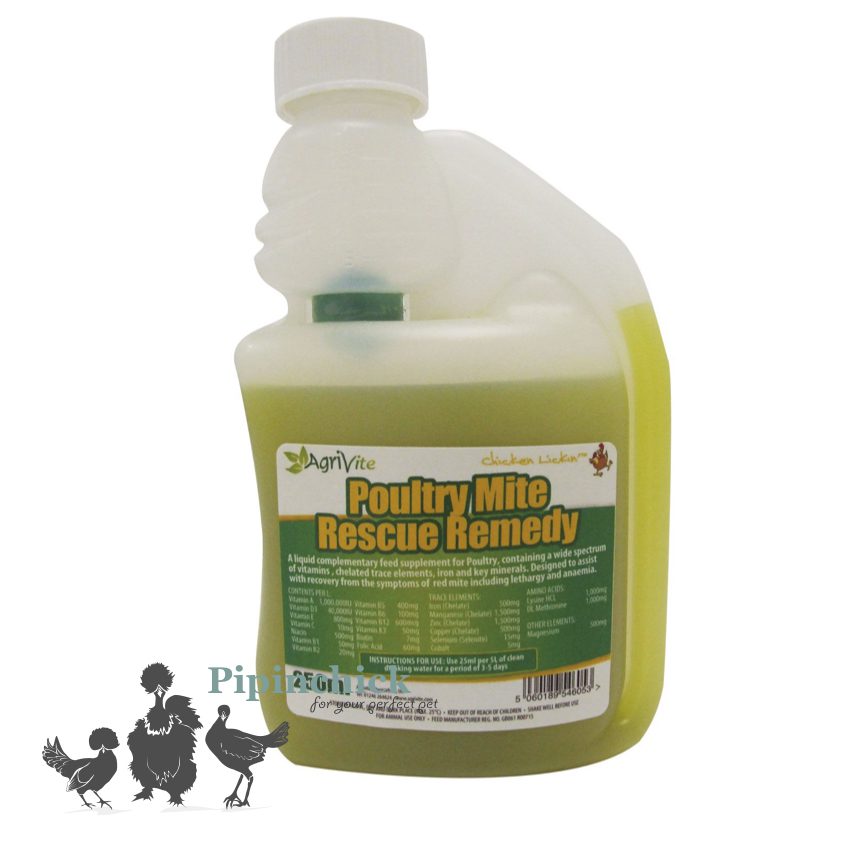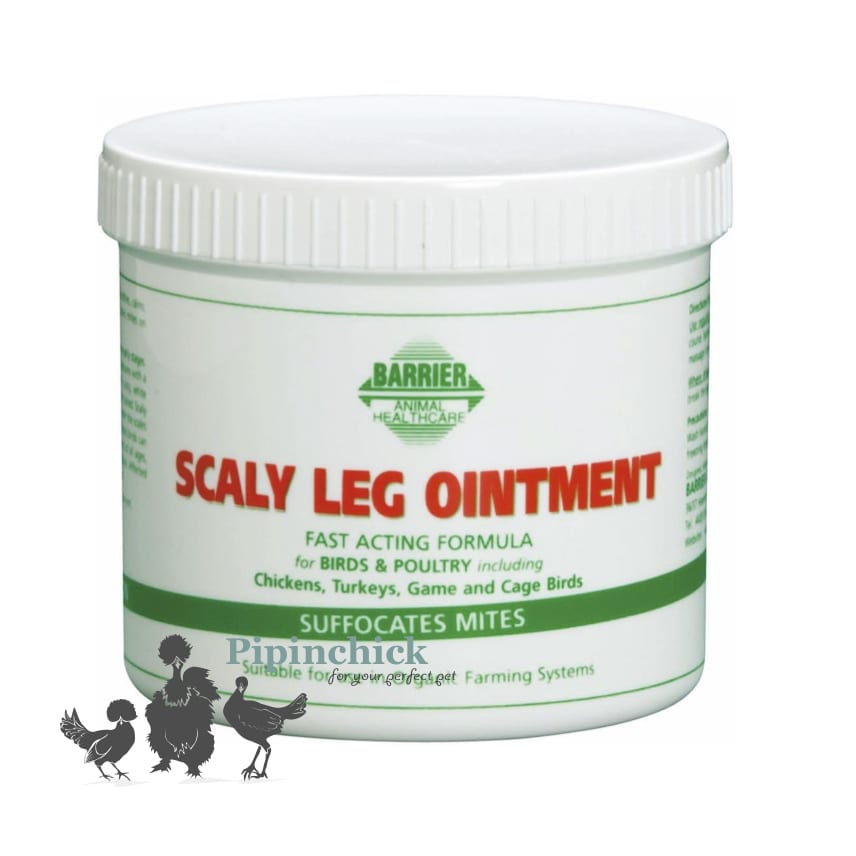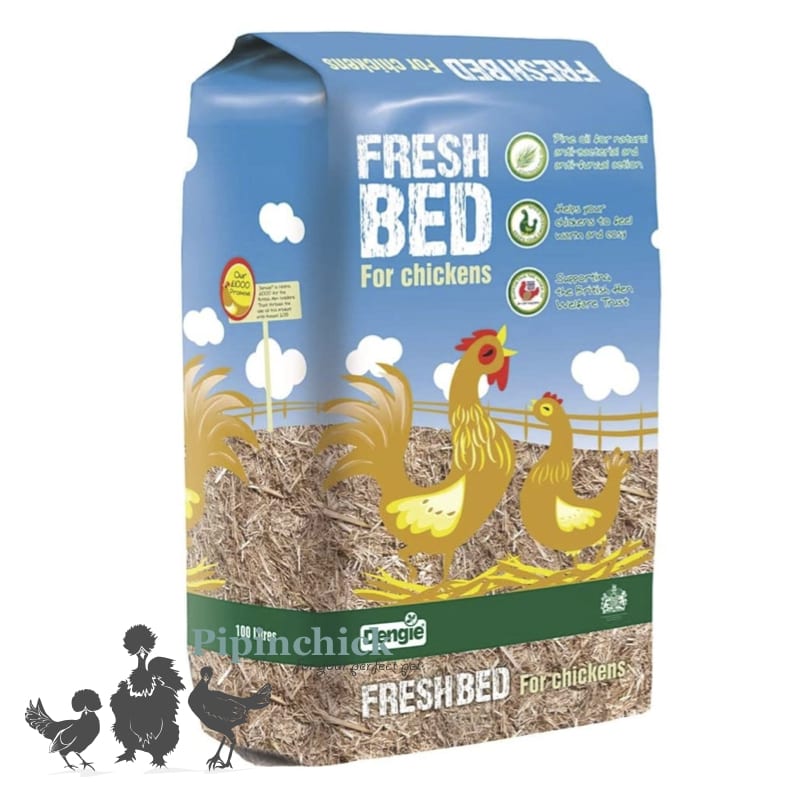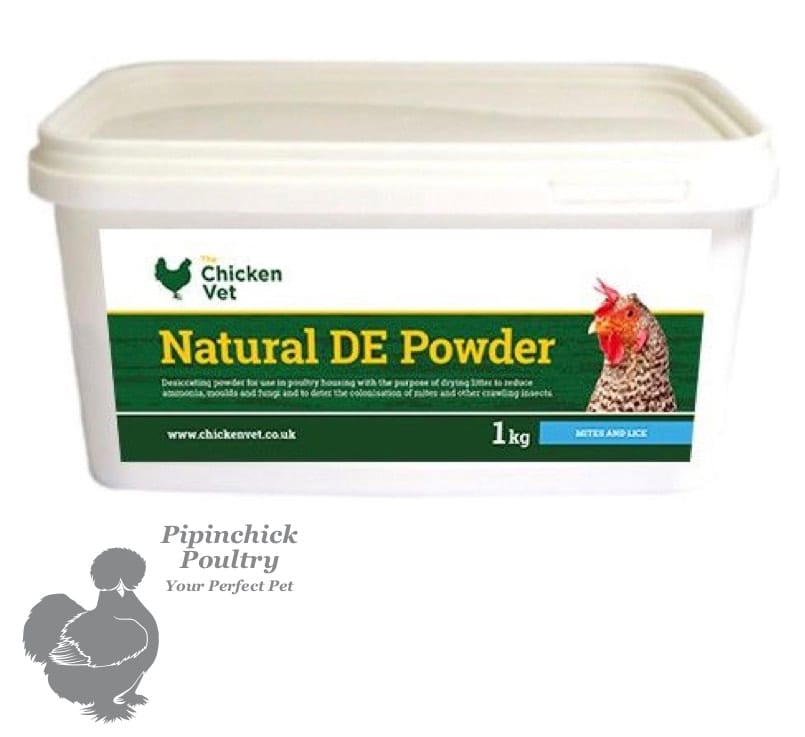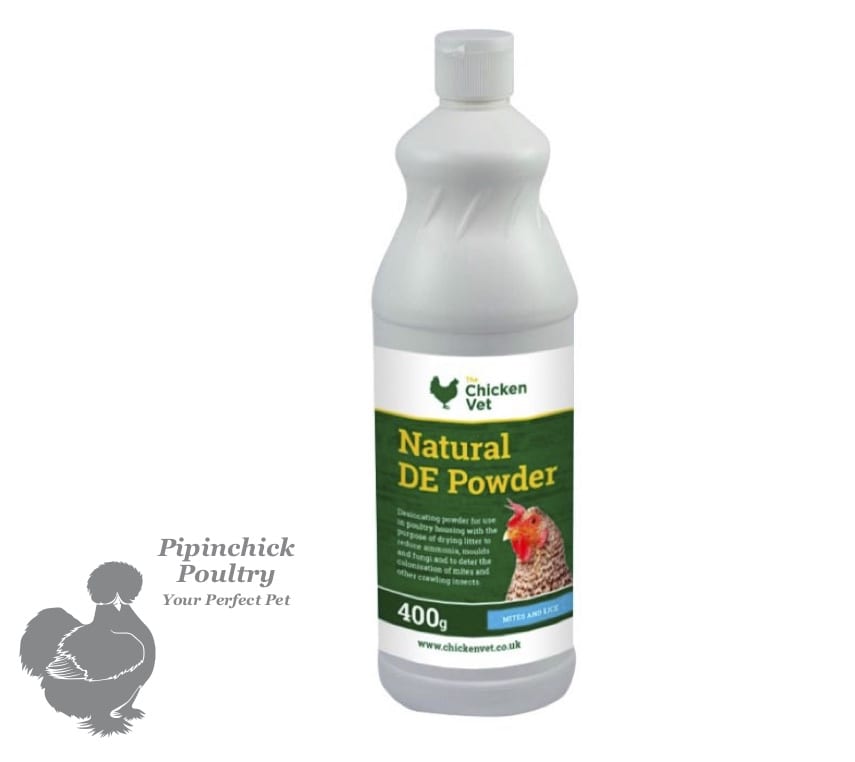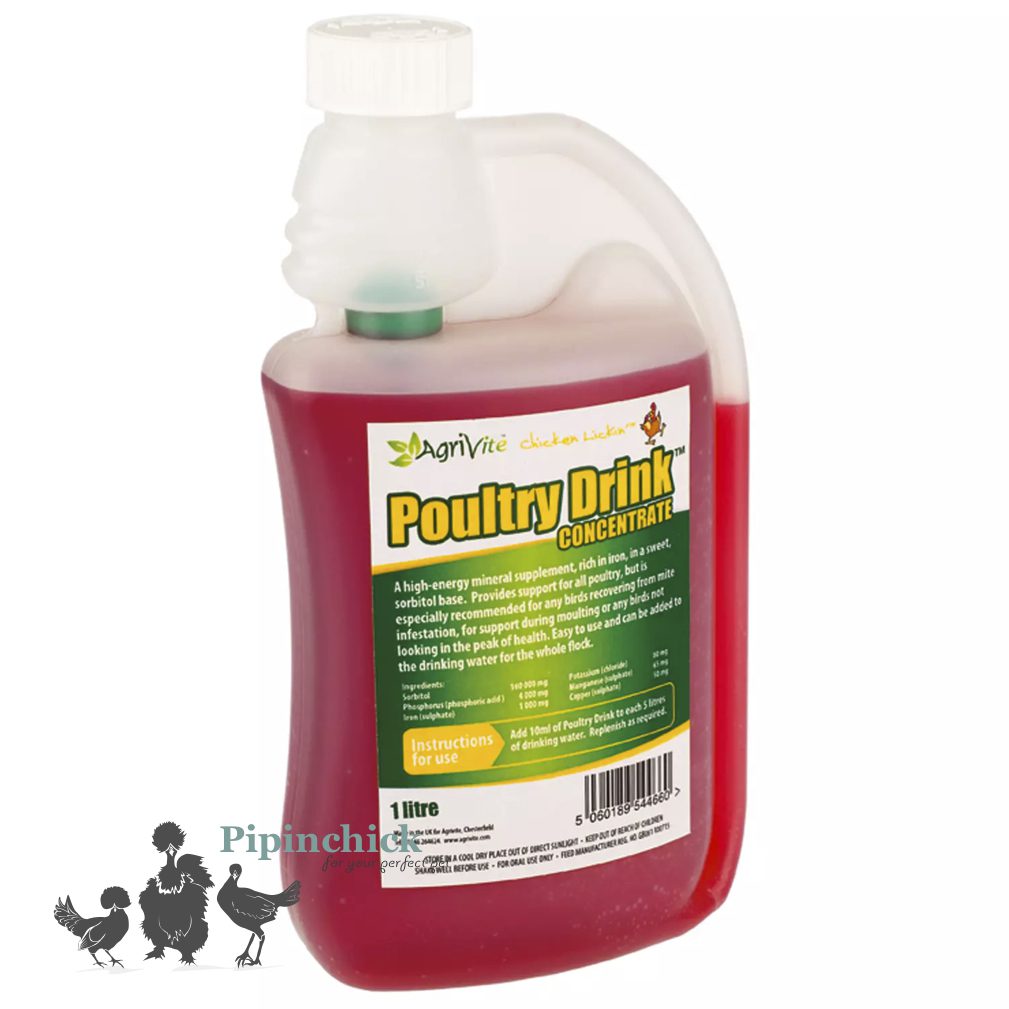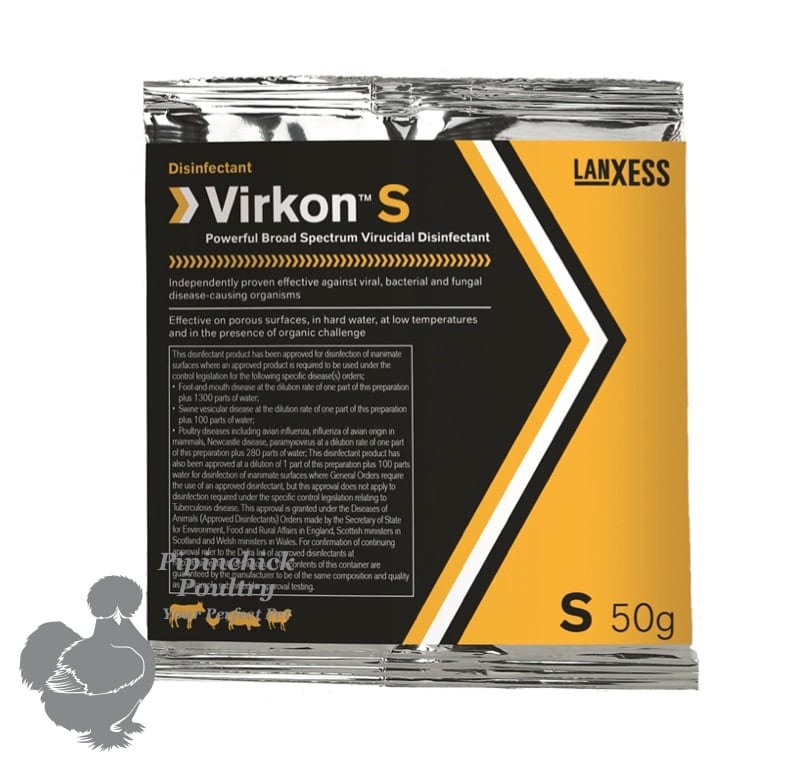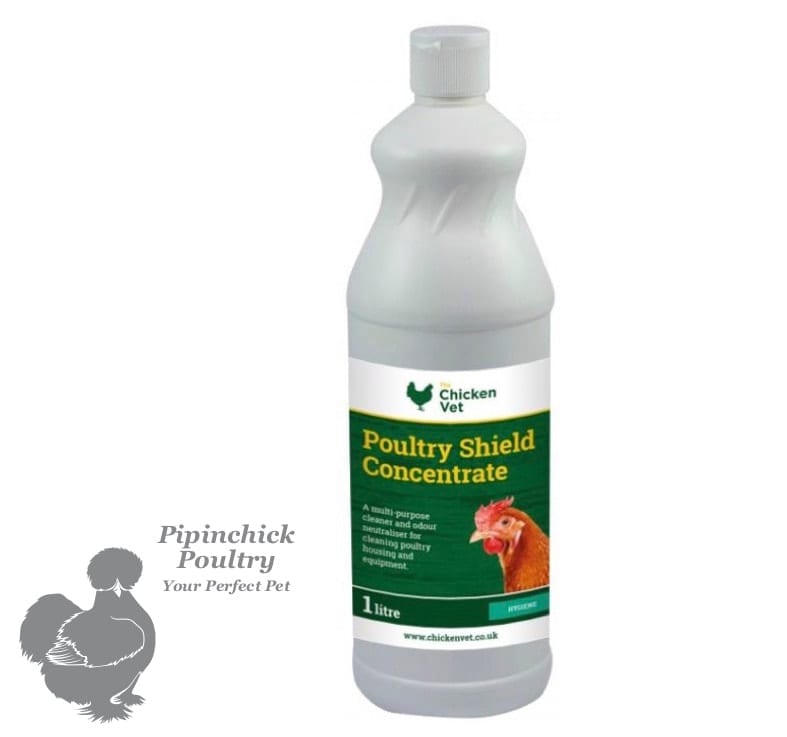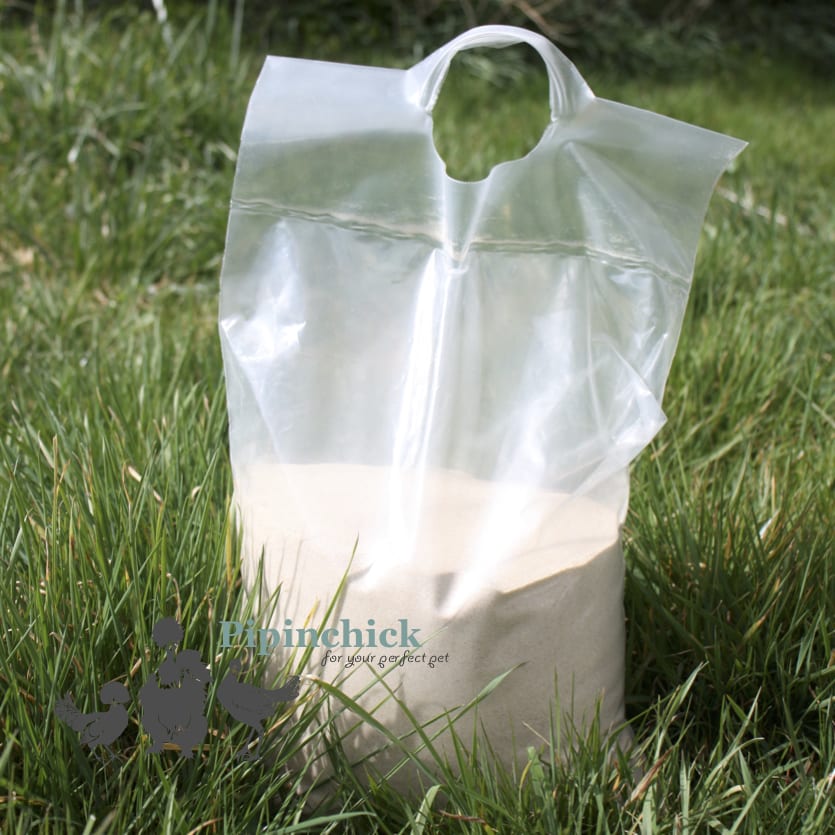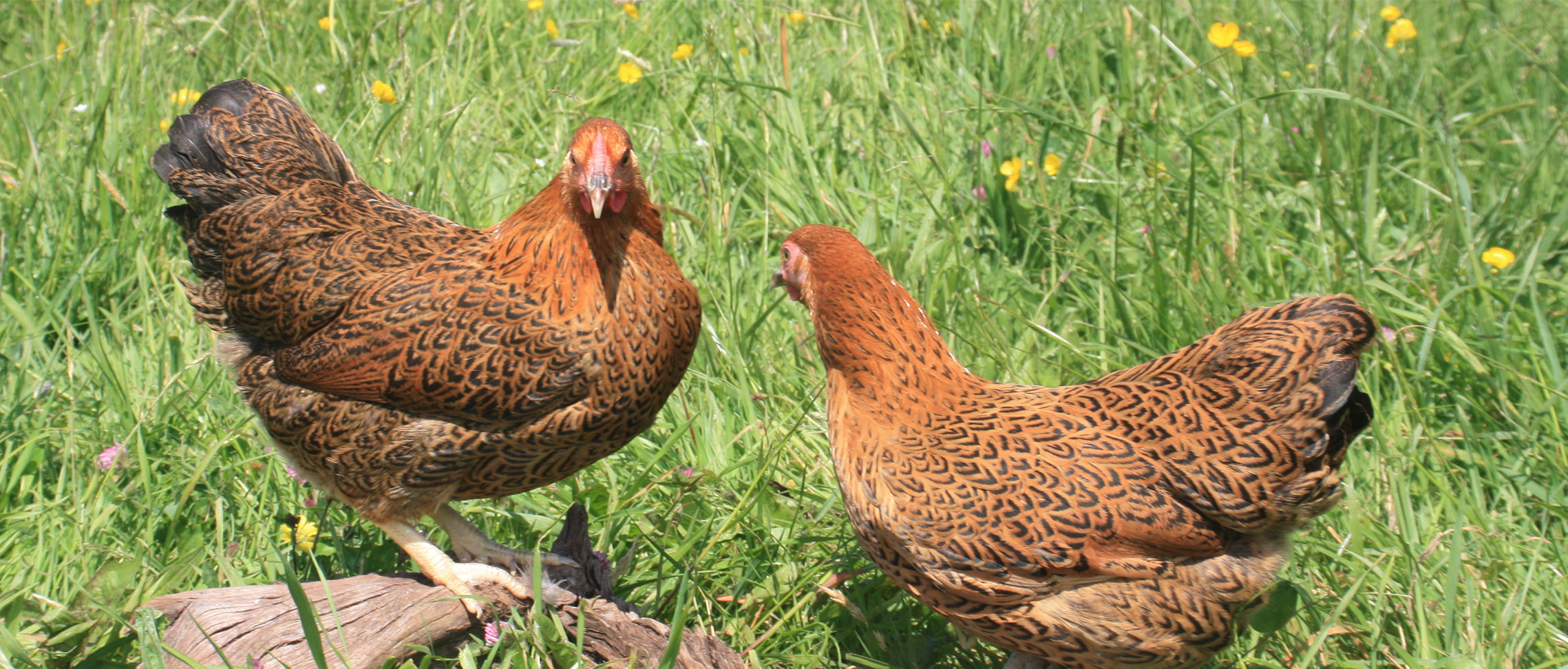



Mites, Lice and Parasites.
What Mites, Lice and Parasites are common in chickens?
There are many different parasites that can cause noticeable symptoms in your chickens, the most common are:
- Red Mites
- Lice
- Worms (including Gape Worm)
- Scaly Leg
They are all a parasite and can cause an infestation that can manifest both internally or externally on or in your hen. Mites and lice are external parasites and can be seen on the skin of you hen, they sustain themselves by consuming your hen’s blood which can cause your hen to become deficient in iron and other essential minerals. Internal parasites such as thread worm or gape worm live inside your hen’s body using it as a host. All are very unpleasant for your hen, but most are very easily preventable and treatable. Red mites and poultry lice cannot live on humans.
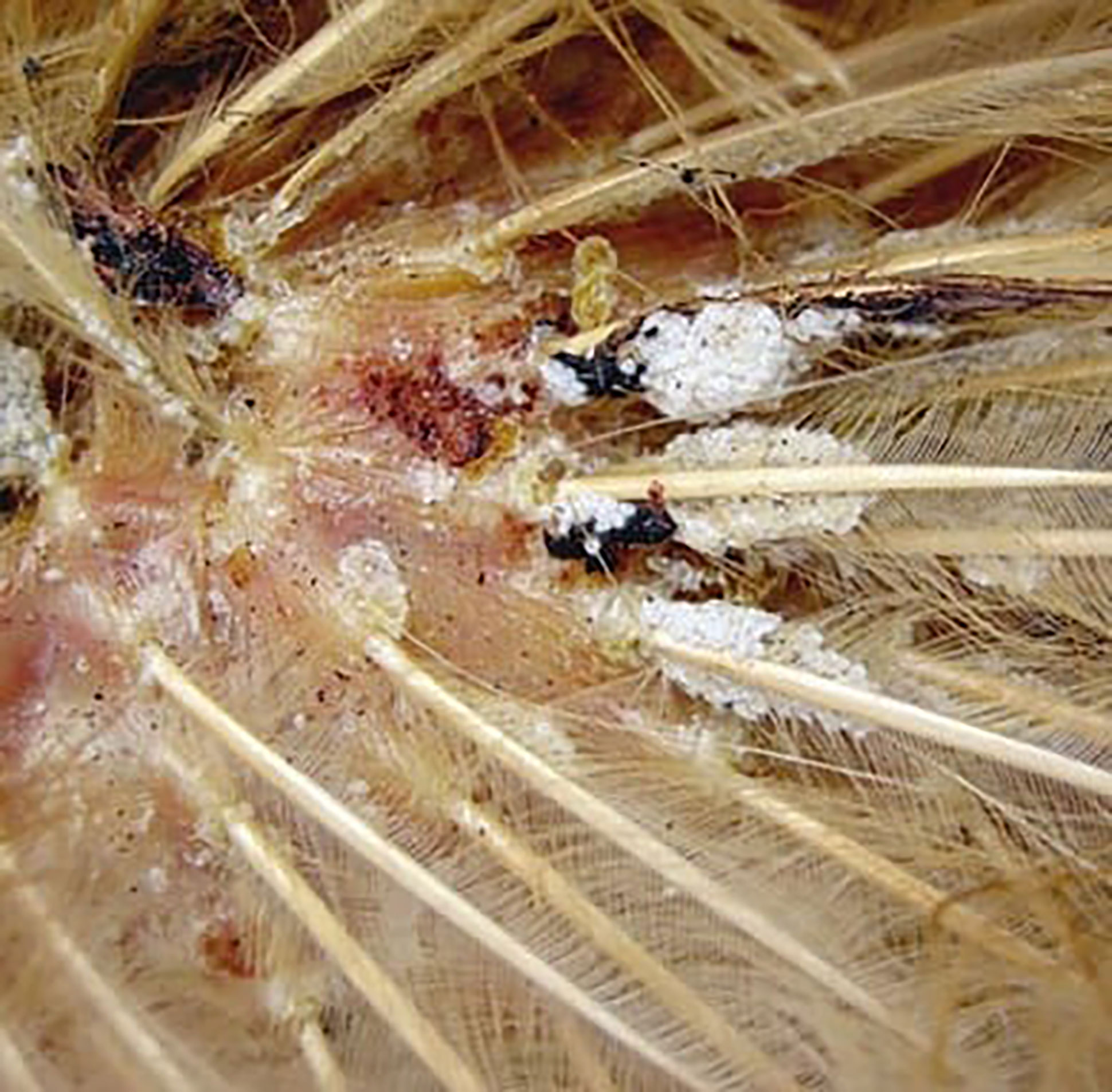
Mite Infestation.
What are the main symptoms of Mites, Lice and Parasites in chickens?
The symptoms can vary depending on the type if infestation but can be shown as some of the below:
- Pale combe and wattles, due to having an iron deficiency.
- Irritability and increased scratching.
- Loss of weight and overall condition.
- Wet and runny poo, possibly with worms visible in the stool.
- Gasping, gape worm is a parasite living in the respiratory system and cause gasping and problems breathing.
- Loss of appetite and lathery.
- Reluctance to go inside and sleep their coop, (red mites live inside the coop and come out at night to feed).
- Raised scales and white crusting on legs and feet
How are Mites, Lice and Parasites contracted?
All are contracted in a variety of different ways.
- Internal parasites are ingested and contracted from either wild bird poo or an infected flock mate’s faecal matter on the ground, as the hens then scratch and forage, they ingest infected poop.
- Internal parasites can therefor also be contracted from a dirty environment.
- Mites and Lice tend to be picked up when hens are out and about foraging.
- Mites and Lice can also be contracted from rats, other rodents and wildlife including wild birds.
- From infested coops and houses, red mite lives in wood and crevices (even in plastic houses) and can lay dormant for up to 1 year. Red mite is more prevalent during the warmer months as they cannot reproduce in cold weather.
How to prevent a Mite, Lice or Parasite Infestation.
Keeping a clean environment is one of the main ways to prevent any kind of parasite, make sure you regularly clean and disinfect your coop and run using our Virkon S single use sachets and good quality cleaners. Ensure your litter is freshened every 2-3 weeks and don’t let poo and muck build up in your run or coop. If you have a gravel or bark lined run, you will need to change the bark at the end of each year and disinfect the gravel regularly with a sprayer.
Have a read of our guide on how to prevent mites and lice by keeping a strict cleaning regime.
Chickens will naturally try to keep mites and lice at bay by bathing in dust baths, these are very easy to create and can work as a wonderful natural preventative. Creating a dust bath requires a tub of some kind you can use our readymade Scented Sands Dust Bath kit or you can make your own using: large tyres, old sinks/baths, plastic paddling pools etc… All work very well, we advise digging your tub or planter into the ground as hens will be more inclined to use a tub if it is flush with the ground, you will also need to ensure it is located in a covered area and kept dry. Once you have set up your tub you can then fill this with kiln dried sand and DE powder, the sand and diatomaceous earth (DE) work as a natural preventative for external mites, the tiny grains of both will cut the mites and lice and kill them.
Scaly leg attaches to your hen’s legs, it is an external parasite and is contracted by hen-to-hen contact, it presents as raised scaly looking bumps on your hen's legs and feet, you can prevent it by regular checks and as above keeping a clean area.
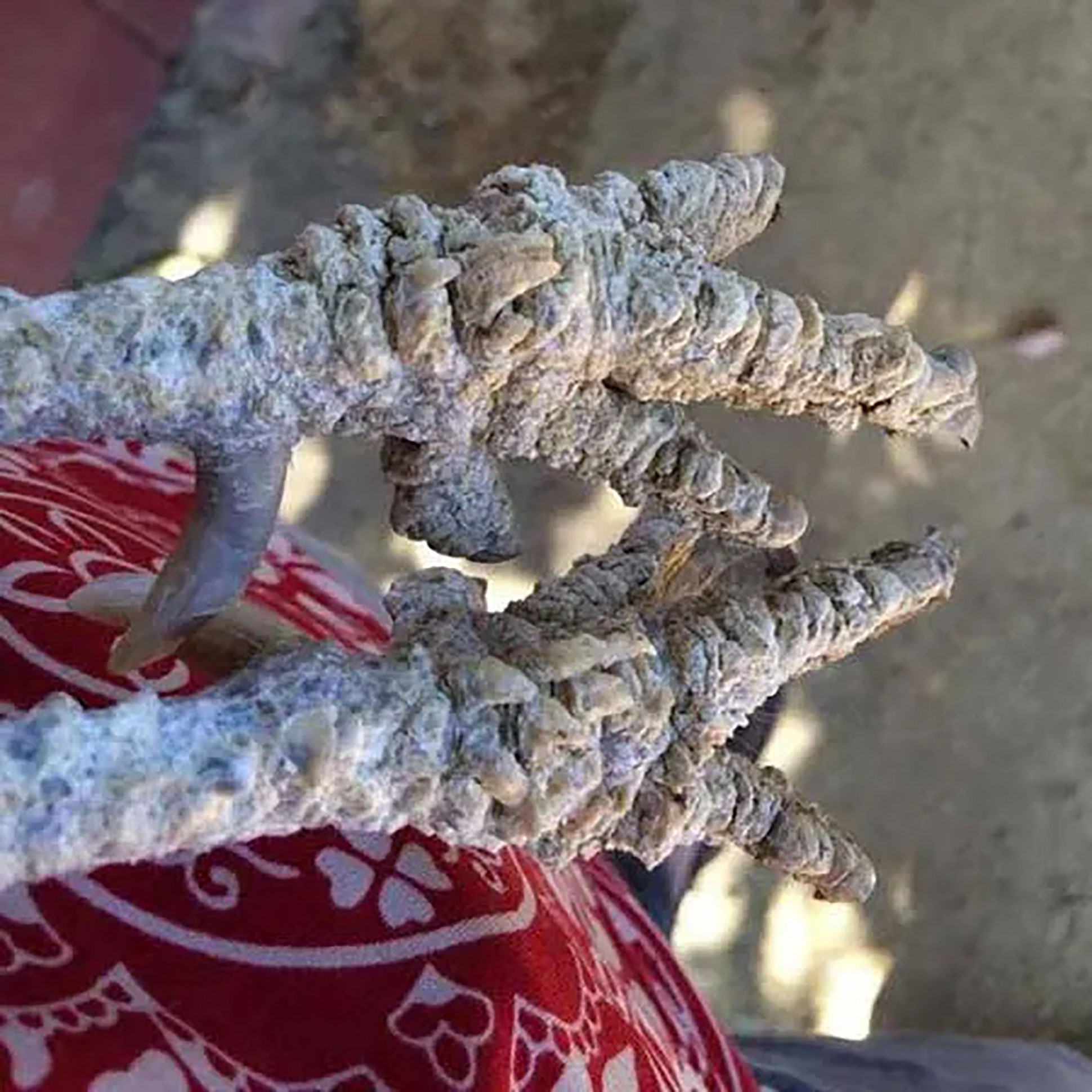
Scaly Leg Infestation.
Red Mite is a little trickier as the mites are nocturnal and will only come out at night to feast on your hens, preventing these will involve regular checks of your coop and hens at night using a head torch, and treating the coop/house and hens directly with DE powder from a puffer style bottle.
Preventing Internal parasites can be done by keeping a clean environment but also using natural preventatives such as garlic in your hens' water or readymade remedies such as Phytopet Wormood or Vermex. We don’t advise against using natural remedies, but natural preventatives are not proven as effective as keeping a clean environment and regularly treating with medicated wormers such as Flubenvet.
Effective Treatment for Mites, Lice and Parasites.
Internal Parasites including Gape Worm. Most internal parasites live in your hen's digestive system, however, gape worm lives in your hen's respiratory system and presents with different symptoms similar to Mycoplasma, such as gaping, lifting the head to the sky and gasping. All are treatable with Flubenvet powder, we recommend mixing with feed yourself. The ratio will be on the packaging, you simply estimate how much feed your hens will eat in a 7-10 day period depending on your treatment time, put this feed into a different container and mix with the correct amount of Flubenvet powder. Feed only this to your hens for the treatment period, no extra treats and if possible, cut down foraging time as you want the hens to consume as much of the treated feed as possible. We recommend treating your whole flock with powdered Flubenvet every 3-4 months regardless, it is not a preventative but will kill parasites at the time of treating so if you treat regularly, you will help stop an infestation gaining hold and during the periods between treatments you can use natural preventatives.
Treating for mites and lice can be done by cleaning your area thoroughly, and washing your hens in a flea or lice pet shampoo, it's advisable to dry with a blow dryer, once they are fully dry dust with DE powder, ensure when you dust with the powder you are parting the feathers and making sure the DE powder is making contact with the skin, particularly around your hen’s vent, under belly, under wings and thighs. For very bad infestations you may need to consult your vet, you can get a very effective water soluble treatment called Exzolt, this will kill all lice pr mites on your bird and is only available on prescription, you will still need to ensure your clean the area regularly once you have found an infestation, you can also trat your coop or house with DE powder too.
Scaly leg is a little different, the mites attach to your hen’s leg by burrowing under your hen’s leg scales, they then reproduce, and this eventually lifts the scales up, this is a good early indicator if you see the scales lifting away from the leg and turning white at the edges. Suffocating the mites is the best course of treatment, this can be done by slathering the leg and feet once a day in a barrier treatment such as Barrier Scaly Leg, this suffocates the mites already under the scales but also prevents more mites from attaching.
Face to Face Consultation.
If you are still unsure about the health of your chickens and would like a professional opinion, we now offer live face to face consultations via Zoom, WhatsApp or Facetime, this allows us to have a face-to-face call with you and your chickens. You can show us what’s wrong and we can then offer real-time advice and care tips.
